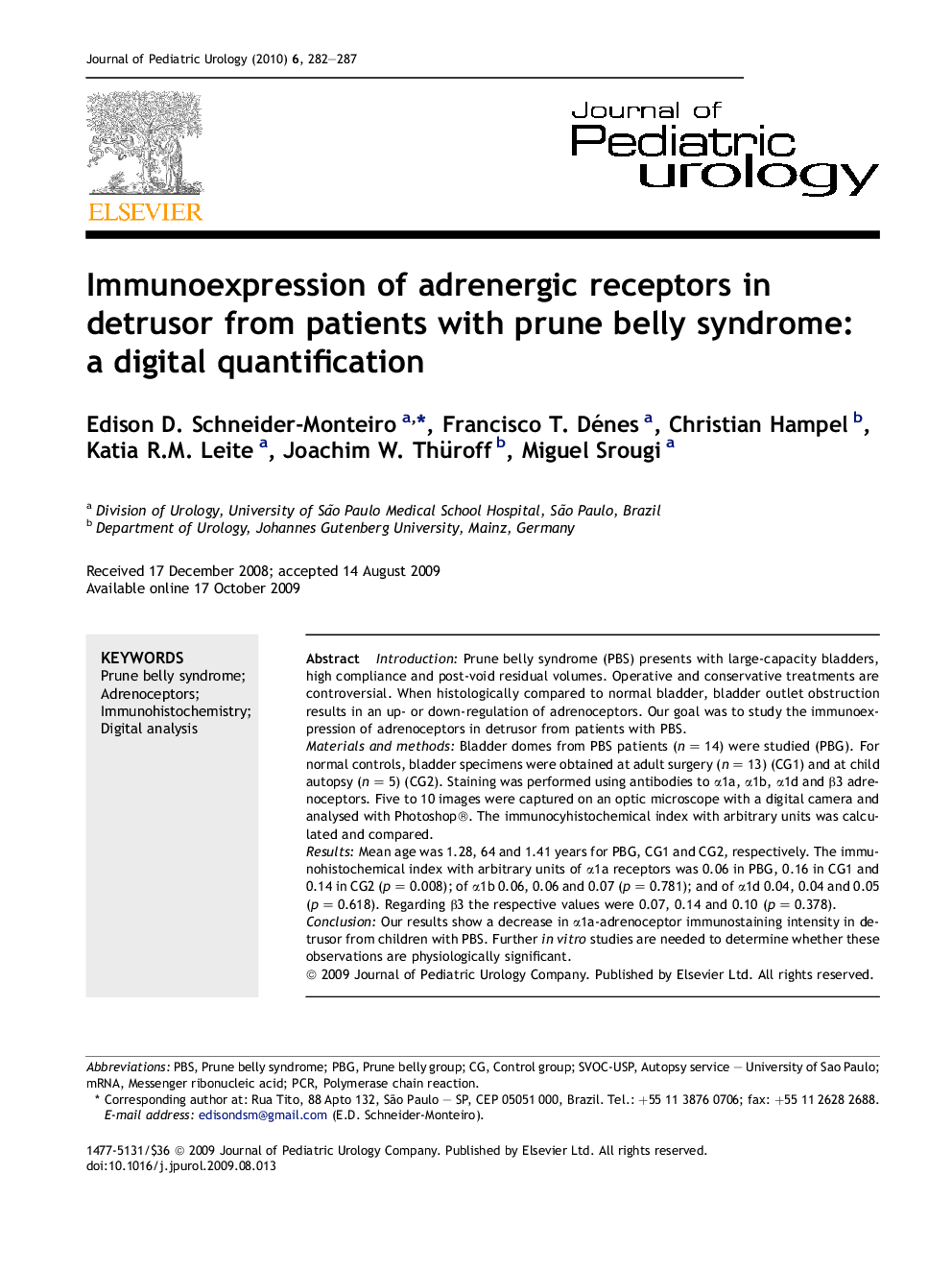| Article ID | Journal | Published Year | Pages | File Type |
|---|---|---|---|---|
| 4163012 | Journal of Pediatric Urology | 2010 | 6 Pages |
IntroductionPrune belly syndrome (PBS) presents with large-capacity bladders, high compliance and post-void residual volumes. Operative and conservative treatments are controversial. When histologically compared to normal bladder, bladder outlet obstruction results in an up- or down-regulation of adrenoceptors. Our goal was to study the immunoexpression of adrenoceptors in detrusor from patients with PBS.Materials and methodsBladder domes from PBS patients (n = 14) were studied (PBG). For normal controls, bladder specimens were obtained at adult surgery (n = 13) (CG1) and at child autopsy (n = 5) (CG2). Staining was performed using antibodies to α1a, α1b, α1d and β3 adrenoceptors. Five to 10 images were captured on an optic microscope with a digital camera and analysed with Photoshop®. The immunocyhistochemical index with arbitrary units was calculated and compared.ResultsMean age was 1.28, 64 and 1.41 years for PBG, CG1 and CG2, respectively. The immunohistochemical index with arbitrary units of α1a receptors was 0.06 in PBG, 0.16 in CG1 and 0.14 in CG2 (p = 0.008); of α1b 0.06, 0.06 and 0.07 (p = 0.781); and of α1d 0.04, 0.04 and 0.05 (p = 0.618). Regarding β3 the respective values were 0.07, 0.14 and 0.10 (p = 0.378).ConclusionOur results show a decrease in α1a-adrenoceptor immunostaining intensity in detrusor from children with PBS. Further in vitro studies are needed to determine whether these observations are physiologically significant.
